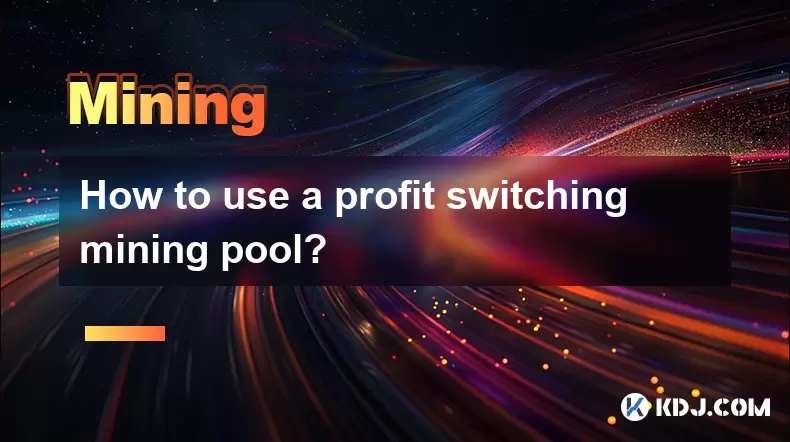-
 Bitcoin
Bitcoin $118,209.3536
1.16% -
 Ethereum
Ethereum $3,151.7546
5.98% -
 XRP
XRP $2.9277
2.35% -
 Tether USDt
Tether USDt $1.0000
0.00% -
 BNB
BNB $689.7099
1.26% -
 Solana
Solana $163.4270
1.91% -
 USDC
USDC $1.0000
0.02% -
 Dogecoin
Dogecoin $0.1983
3.74% -
 TRON
TRON $0.3008
0.51% -
 Cardano
Cardano $0.7435
2.86% -
 Hyperliquid
Hyperliquid $47.6547
-0.48% -
 Stellar
Stellar $0.4625
2.79% -
 Sui
Sui $3.9921
2.71% -
 Chainlink
Chainlink $16.0608
4.23% -
 Hedera
Hedera $0.2348
1.56% -
 Bitcoin Cash
Bitcoin Cash $496.6985
1.25% -
 Avalanche
Avalanche $21.9038
5.41% -
 UNUS SED LEO
UNUS SED LEO $8.8356
-1.88% -
 Shiba Inu
Shiba Inu $0.0...01364
5.31% -
 Toncoin
Toncoin $3.1102
4.35% -
 Litecoin
Litecoin $95.9756
3.59% -
 Polkadot
Polkadot $4.0925
5.78% -
 Monero
Monero $333.7622
-1.44% -
 Uniswap
Uniswap $9.1968
2.25% -
 Bitget Token
Bitget Token $4.6378
6.23% -
 Pepe
Pepe $0.0...01282
6.77% -
 Dai
Dai $1.0002
0.03% -
 Ethena USDe
Ethena USDe $1.0005
0.00% -
 Aave
Aave $329.9143
4.49% -
 Bittensor
Bittensor $441.4995
6.89%
How to use a profit switching mining pool?
A profit switching mining pool automatically switches between cryptocurrencies to maximize earnings based on real-time profitability metrics.
Jul 12, 2025 at 04:43 am

Understanding Profit Switching Mining Pools
A profit switching mining pool is a type of cryptocurrency mining pool that automatically switches between different cryptocurrencies based on which one offers the highest profitability at any given time. This mechanism allows miners to maximize their earnings without manually changing mining algorithms or targets. The core idea behind this system is algorithmic optimization, where the pool constantly evaluates hash rate, difficulty, and exchange rates of various coins before deciding where to allocate resources.
These pools typically support multiple hashing algorithms such as Scrypt, SHA-256, Ethash, KawPow, and more. When you connect your mining rig to the pool, it analyzes real-time data from exchanges and mining statistics to determine the most profitable coin to mine at that moment. The switch happens seamlessly in the background, ensuring minimal downtime and maximum output.
Setting Up Your Mining Software
Before connecting to a profit switching mining pool, you need to configure your mining software correctly. Popular choices include NiceHash Miner, Awesome Miner, and bfgminer, each offering compatibility with dynamic mining pools.
Here’s how to set up:
- Download and install your preferred mining software.
- Locate the configuration file or settings menu within the software.
- Enter the mining pool’s server address (e.g., stratum+tcp://pool.example.com:port).
- Input your worker name and password (often customizable by the user).
- Ensure the “auto-switch” or “profit-based” option is enabled if available.
Some pools provide pre-configured profiles for specific hardware like NVIDIA GPUs or ASIC miners, which can be selected directly from the software interface. Always double-check the connection parameters provided by the pool to avoid errors during startup.
Connecting to the Pool
Once your mining software is configured, the next step is connecting to the profit switching mining pool. This involves launching the miner and observing its behavior during the initial handshake with the server.
During this phase:
- Your mining software sends authentication details to the pool.
- The pool verifies your credentials and assigns work units based on current profitability metrics.
- You should see log entries indicating accepted shares and active mining status.
It's crucial to monitor these logs for any rejected shares or connection issues. If problems occur, verify your worker credentials, check network connectivity, and ensure no firewall or antivirus software is blocking outgoing connections on the required ports.
Monitoring Profitability and Performance
After establishing a stable connection, the next focus should be monitoring your mining performance and profitability. Most profit switching pools offer web dashboards or APIs where users can view real-time statistics.
Key metrics to track include:
- Hash rate: Indicates how much computational power your rig is contributing.
- Accepted/rejected shares: Shows the efficiency of your mining process.
- Coin distribution: Reveals which cryptocurrencies are being mined and in what proportions.
- Estimated earnings: Provides an approximation of daily or hourly income based on current conditions.
Some pools integrate with third-party tools like Minerstat or Mining Dashboard, allowing deeper insights into long-term trends and helping identify underperforming hardware or configurations.
Withdrawing Earnings
Earnings from a profit switching mining pool are usually paid out in the form of the mined cryptocurrency. However, some pools convert everything into a single currency like BTC or USDT for easier tracking.
To initiate a withdrawal:
- Log in to your pool account dashboard.
- Navigate to the “Payouts” or “Withdrawal” section.
- Enter your wallet address for the corresponding cryptocurrency.
- Specify the amount you wish to withdraw (minimum thresholds may apply).
- Confirm the transaction and wait for blockchain confirmation.
Some pools allow automatic withdrawals once a certain balance threshold is reached. Ensure that your wallet supports the coins being mined or use a multi-currency wallet like Trust Wallet or Electrum-Multi to manage diverse assets efficiently.
Frequently Asked Questions
Q1: Can I manually choose which cryptocurrency to mine in a profit switching pool?
Most profit switching pools operate on automated logic and do not allow manual selection. However, some advanced pools offer optional "pinning" features that let you lock onto a specific coin for a limited period.
Q2: Are there fees associated with using a profit switching mining pool?
Yes, these pools typically charge a small percentage as a service fee, ranging from 1% to 5%, depending on the platform. Additionally, blockchain transaction fees apply when withdrawing funds.
Q3: How often does the pool switch between cryptocurrencies?
The frequency varies by pool but generally occurs every few minutes to several hours. The goal is to balance responsiveness with stability, avoiding excessive switching that could reduce overall efficiency.
Q4: What happens if all coins become unprofitable?
In rare cases where profitability dips below operational costs, some pools may pause mining temporarily or notify users through alerts. It’s advisable to monitor external market conditions alongside pool performance to make informed decisions.
Disclaimer:info@kdj.com
The information provided is not trading advice. kdj.com does not assume any responsibility for any investments made based on the information provided in this article. Cryptocurrencies are highly volatile and it is highly recommended that you invest with caution after thorough research!
If you believe that the content used on this website infringes your copyright, please contact us immediately (info@kdj.com) and we will delete it promptly.
- Eclipse Airdrop and Token Supply: Navigating the Crypto Landscape
- 2025-07-16 18:50:13
- Solana Price, Zebec Network, and Remittix: Decoding the Crypto Signals
- 2025-07-16 18:30:13
- Crypto Picks & Altcoin Breakout: August's Hottest Trends
- 2025-07-16 18:30:13
- XLM Stellar Analyst Prediction: Is a $10 Target on the Horizon?
- 2025-07-16 19:10:12
- Dubai, Ripple, and Tokenization: A New Era for Real Estate
- 2025-07-16 18:50:13
- Unilabs Finance (UNIL): Primed for a Massive 2025 Launch?
- 2025-07-16 19:15:12
Related knowledge

How are crypto mining profits taxed?
Jul 14,2025 at 12:28am
Understanding Cryptocurrency Mining and TaxationCryptocurrency mining involves validating transactions on a blockchain network and earning rewards in ...

How to keep a mining rig cool
Jul 12,2025 at 01:42pm
Understanding the Importance of Cooling in Mining RigsCryptocurrency mining is an intensive process that places heavy demand on hardware components, p...

How to mine crypto on a gaming PC
Jul 16,2025 at 12:00pm
What is Crypto Mining on a Gaming PC?Crypto mining involves using your computer's processing power to validate transactions on a blockchain network. A...

How to set up a crypto miner
Jul 16,2025 at 09:14am
Understanding Ethereum Gas Fees: What Are They and How Do They Work?Ethereum gas fees are a fundamental aspect of the network, representing the cost r...

Can you mine crypto on a laptop?
Jul 16,2025 at 02:21am
Is It Feasible to Mine Cryptocurrency on a Laptop?Mining cryptocurrency on a laptop is technically possible, but feasibility depends heavily on the ha...

Is crypto mining worth it?
Jul 16,2025 at 01:21am
Understanding the Basics of Crypto MiningCrypto mining refers to the process of validating transactions on a blockchain network by solving complex mat...

How are crypto mining profits taxed?
Jul 14,2025 at 12:28am
Understanding Cryptocurrency Mining and TaxationCryptocurrency mining involves validating transactions on a blockchain network and earning rewards in ...

How to keep a mining rig cool
Jul 12,2025 at 01:42pm
Understanding the Importance of Cooling in Mining RigsCryptocurrency mining is an intensive process that places heavy demand on hardware components, p...

How to mine crypto on a gaming PC
Jul 16,2025 at 12:00pm
What is Crypto Mining on a Gaming PC?Crypto mining involves using your computer's processing power to validate transactions on a blockchain network. A...

How to set up a crypto miner
Jul 16,2025 at 09:14am
Understanding Ethereum Gas Fees: What Are They and How Do They Work?Ethereum gas fees are a fundamental aspect of the network, representing the cost r...

Can you mine crypto on a laptop?
Jul 16,2025 at 02:21am
Is It Feasible to Mine Cryptocurrency on a Laptop?Mining cryptocurrency on a laptop is technically possible, but feasibility depends heavily on the ha...

Is crypto mining worth it?
Jul 16,2025 at 01:21am
Understanding the Basics of Crypto MiningCrypto mining refers to the process of validating transactions on a blockchain network by solving complex mat...
See all articles

























































































